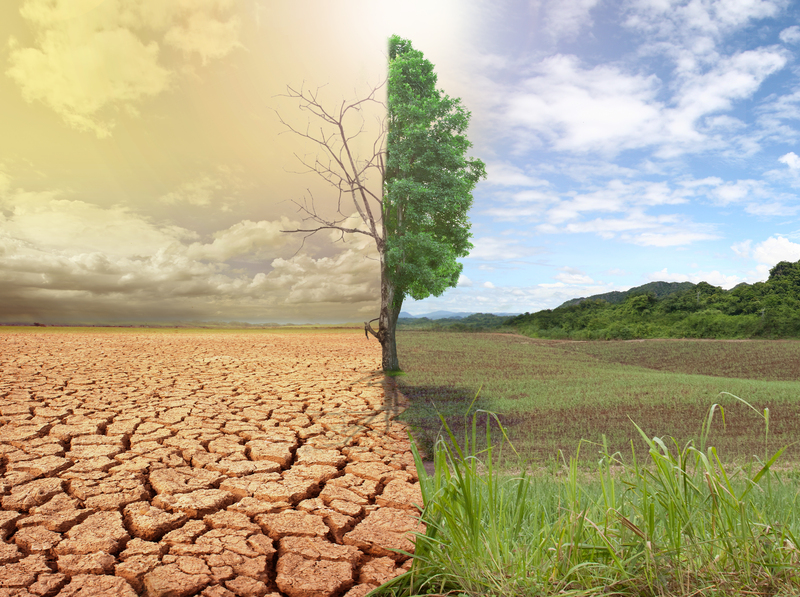How Households Can Dispose of PPE Waste Without Harming the Environment
The rise of the COVID-19 pandemic has led to an unprecedented increase in the use of personal protective equipment (PPE) such as masks, gloves, and face shields. While these items are essential for public health and safety, their improper disposal can have severe environmental consequences. In this comprehensive guide, we will explore how households can dispose of PPE waste responsibly, minimize environmental impact, and even contribute to a cleaner planet.
Understanding the Environmental Impact of PPE Waste
Disposable PPE, while life-saving, is primarily made from plastic-based materials that are not biodegradable. When discarded improperly, PPE waste adds to the mounting plastic pollution problem, clogging landfills and polluting waterways.
The Dangers of Improper PPE Waste Disposal
- Wildlife Hazards: Animals can mistake discarded masks or gloves for food, leading to ingestion and possible death.
- Microplastic Pollution: Many PPE items break down into microplastics, which persist in the environment and enter food chains.
- Risks to Human Health: Careless disposal can contaminate water sources and spread infections.
Therefore, it is vital that households follow eco-friendly disposal methods for used PPE.

Best Practices for Disposing of PPE Waste at Home
To safely discard used PPE without harming the environment, apply these practical and scientifically recommended steps:
1. Separate PPE Waste from Recyclable and Organic Trash
- Do not mix: Used masks, gloves, and face shields should NOT be thrown in with recyclables or organic waste.
- Designate: Set aside a specific bin or bag for PPE waste, preferably one that is lined and can be sealed.
Segregating PPE waste ensures it does not contaminate recyclable materials or compost.
2. Avoid Littering
- Never throw PPE items on the ground or in public spaces, as this can directly pollute the environment and put sanitation workers at risk.
- Always carry a spare bag to store used PPE when outside your home until you can dispose of it properly.
3. Use the Correct Bin for PPE Waste
- Most municipalities recommend disposing of PPE waste in the general waste (landfill) bin, as these items cannot be recycled through standard recycling programs.
- Check with your local waste management authority for specific directions, as some areas may have designated collection points for used PPE.
4. Minimize the Spread of Infection
- After handling used PPE, always wash your hands thoroughly with soap and water or use an alcohol-based sanitiser.
- Do not touch your eyes, mouth, or face before cleaning your hands following PPE disposal.
Easing the Environmental Impact by Reducing PPE Waste
One of the most effective ways for households to minimize environmental harm is to reduce how much PPE waste they generate in the first place.
Switch to Reusable Masks Where Safe
- Reusable cloth masks can be washed and reused multiple times, significantly reducing PPE waste in comparison to disposable masks.
- Select masks made from organic cotton or biodegradable fabrics for a more sustainable choice.
- Note: Reusable masks should only be used where they are recommended for public/household use, and not in clinical or high-risk settings.
Limit Use of Single-Use PPE
- Reserve single-use PPE for high-risk situations (such as caring for a sick family member) where disposable protection is truly necessary.
- For everyday errands, opt for reusable gear whenever appropriate.
Educate Your Household
- Make sure every member of your home understands the importance of proper PPE disposal.
- Provide clear instructions and accessible disposal points throughout your home.
The Right Way to Dispose of Specific PPE Items
To help minimize negative effects on the environment, follow these guidelines for common PPE items:
Masks (Disposable Surgical and N95)
- Do not cut the mask before disposal unless instructed (some organizations encourage it to prevent animal entanglement).
- Seal the used mask in a bag before placing it in your general waste bin to prevent contamination or littering.
- Never flush masks down the toilet.
Gloves (Latex, Vinyl, Nitrile)
- Remove gloves carefully to avoid touching the outside layer.
- Place immediately in a lined, closed container or sealed bag.
- Do not try to wash and reuse disposable gloves.
Face Shields and Goggles
- Check if they are designed for reuse; many can be cleaned with soap and water or disinfectant.
- If broken or contaminated, dispose of them with general waste unless specified otherwise by local authorities.
Sanitizing Wipes and Tissues
- Used wipes and tissues should also go in general waste, NOT recycling or toilet.
- Never flush them, as they can cause blockages and pollution.
Can Any PPE Waste Be Recycled?
In most regions, household PPE waste cannot be recycled through conventional recycling streams. Most disposable masks and gloves are made with layers of plastic-based material contaminated with biological matter, which makes them unsuitable for recycling with clean plastics.
However, some innovative recycling programs and companies are starting to appear. For example, TerraCycle and similar organizations offer mail-back programs for used PPE, where they process the waste using specialized methods. These programs are more common for businesses and large-scale operations, but some households can participate if they sign up.
If such services are not available in your area, the safest way remains to dispose of PPE waste in the standard waste stream while taking every precaution to contain and handle it safely.
Innovative and Eco-Friendly Approaches to PPE Waste
Researchers and manufacturers have been developing new types of biodegradable PPE and systems for PPE waste management. Here's how households can support these initiatives:
1. Choose Compostable or Biodegradable PPE When Available
- Look for masks made from plant-based or compostable materials.
- Some newer products degrade more quickly than traditional plastics, minimizing long-term waste.
2. Support Brands Using Sustainable Practices
- Patronize companies that offer "closed-loop" systems, where old PPE can be returned for safe disposal or recycling.
- Advocate for sustainable packaging and minimal plastic use in product design.
3. Participate in Local PPE Waste Collection Drives
- Watch for community or municipal drives which collect PPE waste for specialized processing.
- Spread awareness by sharing collection drive information with neighbors and on social media.
Dealing with Large Amounts of PPE Waste
Some households, especially those caring for ill family members, may generate more PPE waste. Here's how to manage higher volumes responsibly:
- Double-bag PPE waste to ensure safe containment.
- Store sealed bags away from children, animals, or weather until collection day.
- Alert your local waste collectors if you are disposing of an unusually large quantity; they may have specialized pick-up procedures.
Alternative Uses and Upcycling of PPE (When Safe and Applicable)
Innovative DIY enthusiasts have found ways to repurpose PPE items in creative or art projects. However, never reuse PPE that has been contaminated by respiratory droplets or bodily fluids.
- Use clean, unused PPE in creative ways such as fashion or home projects.
- Never encourage children to play with used PPE items.

Key Takeaways for Responsible PPE Waste Management at Home
Properly disposing of PPE ensures the safety of both your family and the environment. Here are the most important points for green PPE waste disposal from households:
- Always separate PPE waste from recyclables and organics.
- Use a lined, sealable bin for collecting used masks, gloves, and other PPE.
- Dispose of PPE in your household's general waste, unless a specialized program exists locally.
- Switch to reusable, washable PPE wherever it's safe to do so.
- Look for and support eco-friendly PPE products and innovative recycling or composting solutions.
- Educate your household about the environmental risks associated with improper PPE disposal.
- Be cautious and prioritize hygiene during disposal, always washing hands afterward.
Conclusion: Protect People and the Planet
As the pandemic has shown, PPE is a crucial tool for protecting our health. However, our collective responsibility extends to ensuring this protection does not come at the expense of the environment. By following sustainable and safe PPE disposal practices at home, reducing reliance on single-use plastics, and supporting new solutions, we can make a substantial difference.
Every household plays a vital role. By being informed and proactive, you contribute to a cleaner, safer world for everyone.
Let us all do our part in safeguarding both our communities and the Earth by adopting responsible PPE waste management practices today!